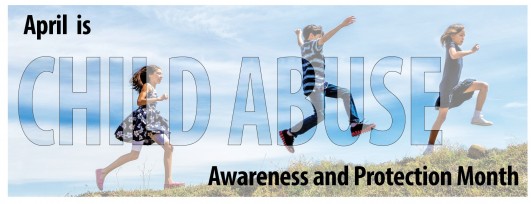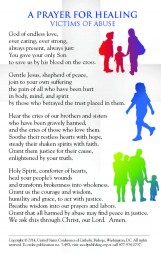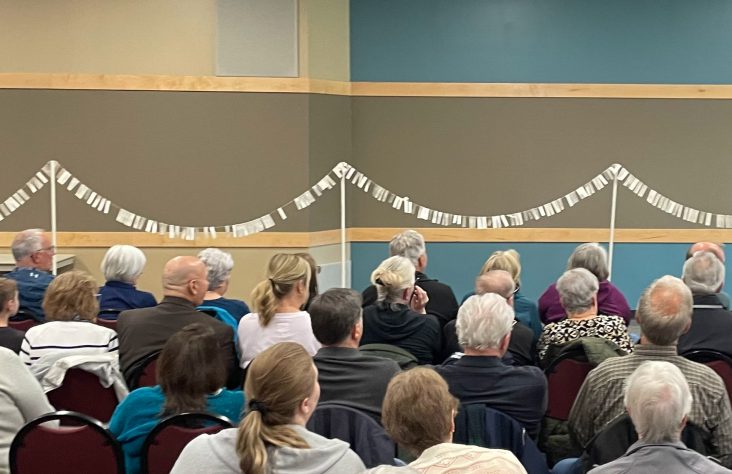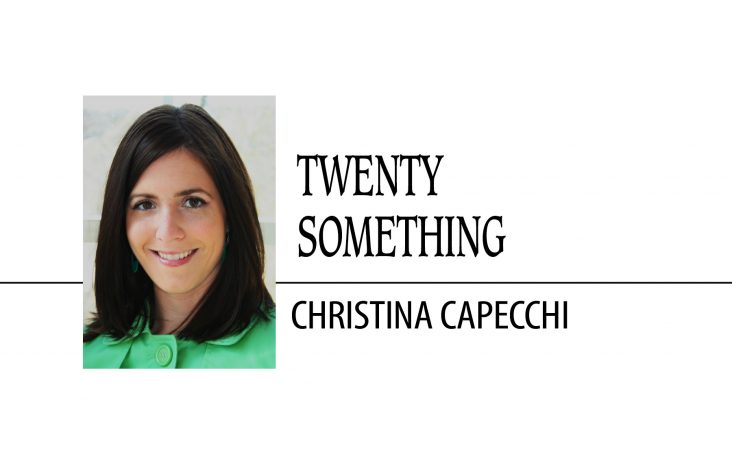April 6, 2016 // Local
Child Abuse Awareness and Protection Month
 “We pledge most solemnly to one another and to you, God’s people; that we will work to our utmost for the protection of children and youth. We pledge that we will devote to this goal the resources and personnel necessary to accomplish it.” — Charter for the Protection of Children and Young People: Statement of Episcopal Commitment, USCCB, June 2002
“We pledge most solemnly to one another and to you, God’s people; that we will work to our utmost for the protection of children and youth. We pledge that we will devote to this goal the resources and personnel necessary to accomplish it.” — Charter for the Protection of Children and Young People: Statement of Episcopal Commitment, USCCB, June 2002
April is recognized as National Child Abuse Awareness and Protection month. Over the next four issues, Today’s Catholic will be publishing a four part series and taking a closer look at how the Diocese of Fort Wayne-South Bend implements the tenets of child protection in our parishes, schools and Catholic organizations.
In November of 2015, the Diocese of Fort Wayne-South Bend was compliant with the data collection requirements for the 2014/2015 Charter audit period.
Here at the Today’s Catholic, we recognize that the topic of child abuse is a sensitive one and even printing stories about it might evoke some emotional responses. Some might even prefer for us to remain silent on the issue, simply because it’s uncomfortable to talk about abuse that happens to children. However, when it comes to cases of abuse of children, silence is not an option. We believe that these stories need to be handled with respect to the dignity of each person, but even more, they need to be told.
I personally encourage you to take the time to read through our special feature over the next four issues. Share what you learn with your family and loved ones and help them become empowered to help build an environment of safety within our parishes, schools and organizations. Beyond that, join us in prayer for the victims of abuse and for our Church that we continue to promise to protect our youth.
 The USCCB provides guidance on how you can help
The USCCB provides guidance on how you can help
You can help prevent the abuse of children. Know the warning signs of offenders. They prefer to be with children. They go overboard touching, wrestling or tickling children. They may give minors alcohol or drugs, or show them pornography. They allow children to break the rules. Offenders act as if the rules do not apply to them.
If you observe an adult who is not behaving appropriately with children, speak up. Let someone know what you saw. You are not accusing anyone of anything. You are letting someone know you care, are watching and are concerned that no harm is done to a child.
Abuse is never the fault of the victim
It is always the responsibility of the offender. The reality is that most victims of abuse know their abuser. One in four females and one in six males report being abused as a minor.
If you or someone you know is a victim of abuse there are things you can do even if the abuse happened years ago. Call the police to report the abuse. If the abuser was in a position of authority in an organization, report the abuse to that organization. Call an abuse crisis hotline.
If it happened in a Catholic church or school, contact Mary Glowaski, Victim Assistance Coordinator for the diocese at 260-399-1458.
— Stephanie A. Patka, Director of Communications for the Diocese of Fort Wayne-South Bend
___________
Children’s Safe Environment training messages
Many people know of the required training that adults are expected to complete prior to working with youth. However, many may not realize that students throughout the diocese are given training as well. A list of those training resources can be found at www.diocesefwsb.org/Youth-Protection.
Here are some of the main messages that children learn through the program:
Abuse is never a child’s fault, a point that children need to hear over and over again. Offenders try hard to make children feel complicit in the abuse or to blame them for the abuse. Children learn that is never true! The blame always belongs to the adult who is taking advantage of a child’s trust and vulnerabilities.
God loves children forever and wants them to live holy and happy lives. If a child has been abused, that child learns they are still innocent and loved by God and their families. The shame of child sexual abuse needs to be put where it belongs: on the abuser.
Abuse that has happened should be reported. Children learn to tell a parent or another trusted adult if someone is hurting them and to keep telling until they are believed. One study shows that children tell of their abuse an average of nine times before someone believes them. Parents can help children learn whom they can trust by pointing out the adults who can be trusted. Parents can also teach children the correct names of private body parts. This simple step gives children the vocabulary to tell others what happened to them.
You can recognize abuse when it happens. Children learn to trust that feeling that says something isn’t right and to tell a parent or other trusted adult when something happens that makes them feel uneasy. Children learn to question if someone is telling them to do what the child doesn’t like but says it is because he loves the child. Children learn to tell parents or trusted adult if another person makes them sad or confused or tries to get them to break rules. This can stop the process of grooming by which an abuser lures a child toward danger. A child who questions another’s inappropriate behavior can send a message to the offender that this child is not an easy target, but one that will tell what is being done to him/her.
There are ways to spot a grooming process. Offenders are willing to spend a great deal of time grooming the family, the child and even the community so they may be seen as a trusted family friend. Children learn that anyone who lets children break rules, gives them alcohol or shows them pornography needs to be reported to parents and other trusted adults. Children learn not to keep secrets from parents. They learn that they should tell parents when someone gives them special gifts or is always touching them or tickling them and says not to tell.
Parents or other trusted adults will talk about this subject. Children often try to protect their parents from bad news, so they need to learn they can tell their parents anything. This lesson is conveyed when parents stay involved in their children’s activities and talk with them about what is happening in their lives. This is how children learn what can be shared with parents. The more effective safe environment programs include parents in the learning process. This gives the child a clear signal that this subject is not off limits but instead is something to be talked about with family members.
Boundaries exist. Learning about personal boundaries can protect children and their knowing boundaries reinforces the teaching to listen to one’s instincts. Children who listen to the voice that says, “This doesn’t feel right,” can protect themselves.
Children can stand up for themselves. Children need to be respectful and obey, yet at the same time need to know there are times when it is okay to say no to an adult. Children learn when it is appropriate for them to say, “No, stop doing that.” For example, they hear they can say no to someone who makes them uncomfortable, shows them pornography, or offers them alcohol.
There are ways to explain inappropriate behavior. Children learn how to describe what’s happening when someone is doing something that just seems a little weird even though it may not seem wrong. The ability to articulate what has happened to a child enables a child to more easily confide in a parent or other trusted adult. This can alert the adult to a potentially dangerous situation so it can be avoided. This is ultimately the goal of safe environment education.
Mary Jane Doerr is the Associate Director, Secretariat for Child and Youth Protection, USCCB. Reprinted with permission
The best news. Delivered to your inbox.
Subscribe to our mailing list today.






